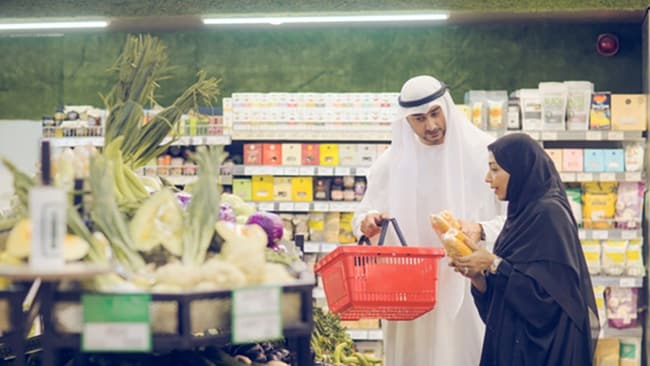Kenya's thriving avocado exports, Ethiopia's renowned coffee sector, and Tanzania's booming horticulture market are a few examples of East Africa's abundant agricultural potential. But there's a catch. Without reliable cold chain logistics, even the most resilient perishables spoil before they reach the market.
Consider the Kenyan farmer who loses 30% of their harvest due to inadequate refrigeration. Or Ethiopia coffee exports that degrade in quality during transit. This is not a mere agricultural logistics hiccup, it's a multi-million-dollar opportunity slipping away. With the right infrastructure, digital innovation, and smart trade strategies, East Africa can leapfrog logistical challenges and become a leading agricultural exporter. Let's explore how.
Country spotlight: Kenya, Tanzania, and Ethiopia's export landscape
Kenya: Expertise in perishable goods exports
The foundation of Kenya's economy is in its agricultural exports, which include coffee, tea, and horticulture. However, the country faces challenges such as pest outbreaks and increasingly stringent European Union (EU) inspections, which impose market access affecting export volumes.
Despite the obstacles, there are encouraging developments in both the landscape and agricultural logistics:
Trade agreements
Kenya is making big strides in international trade, which is great news for its agricultural exports.
The country is setting itself up for major growth thanks to key trade agreements, including:
- The Tripartite Free Trade Area (TFTA)
- A CEPA (Comprehensive Economic Partnership Agreement) between Kenya and the UAE
- Ongoing free trade talks with the United States
The Tripartite Free Trade Area (TFTA) removes import duties on 60-85% of goods, giving Kenya's exports preferential access to African markets. By standardising trade documents and origin rules, it simplifies cross-border trade while tackling bureaucratic hurdles.
The UAE-CEPA simplifies sanitary and phytosanitary (SPS) measures by promoting science-based standards, transparency, and digital certification. This makes it easier for exporters of products like cut flowers and fruits to meet Gulf requirements and avoid border delays.
Also in the works is the U.S.-Kenya Free Trade Agreement, which aims to smooth out non-tariff barriers in agriculture and digital trade. Altogether, these agreements break down trade barriers, unlock new markets, and promote long-term growth.
From spoilage to strength: How Cold Chain Logistics Are Powering Kenya’s Agriculture
Kenya has made notable progress in tackling post-harvest losses, which have historically affected up to 30–40% of agricultural produce. Through strategic investments in cold chain infrastructure such as expanded reefer capacity at ports and solar-powered storage units in key avocado-growing regions, spoilage rates for perishables like avocados have seen reductions of up to 40%. Exporters and aggregators are adopting pre-cooling and cold storage at packhouses significantly extending shelf life and improved export quality.
Meanwhile, Kenya Ports Authority (KPA) reefer upgrades at Mombasa Port cut dwell time from 7 days to 48 hours for perishables. But due to high transport costs, only 15% of smallholder farmers can access these facilities.
For Kenyan exporters, improved cold chain infrastructure is a welcome development. Combined with eco-friendly cold chain solutions, these improvements bolster Kenya's reputation as the region's top agricultural logistics hub.
Tanzania’s trade landscape: Opportunities and challenges
Like its neighbour, Tanzania's agricultural exports drive GDP growth, with the potential to become a regional agro-processing hub. But this is only possible if it overcomes its infrastructure and policy hurdles.
Market access through trade agreements
Tanzania’s trade pacts, including the UK-EAC and EAC-EU agreements, provide tariff-free access to Europe for key exports. Programmes like the Horticulture Exports Accelerator, which is led by TAHA, Trademark Africa, and Tanzania’s UK High Commission, simplify customs and align standards. This ensures faster, fresher deliveries of produce like flowers and vegetables.
However, Tanzania has avoided bilateral FTAs with the U.S., citing protectionist policies against local industries. Whilst regional deals, for example the Southern African Development Community (SADC) and East African Community (EAC), boost trade along with Kenya’s and other exports, the absence of direct agreements with Western countries limits Tanzania’s global competitiveness.
Infrastructure gaps in cold chain agricultural logistics
Though Dar es Salaam and Mtwara ports have recently upgraded refrigerated storage, inland cold chain networks remain unreliable. Regulatory bodies like the Tanzania Food and Drugs Authority (TFDA) and the Tanzania Meat Board (TMB) enforce standards. But they require modernisation and stronger funding to keep pace with global demands.
Digital solutions for trade efficiency
Tanzania could scale up by integrating IoT sensors for temperature tracking and AI-driven logistics for route optimisation. For instance, using AI to predict peak harvest times and optimize shipping schedules would reduce delays and maximize freshness for exports like mangoes and pineapples. These innovations align with Tanzania’s revised National Trade Policy, which prioritizes technology to enhance export efficiency.
Public-private partnerships driving change
Through combined public and private partnerships, Tanzania is bridging infrastructure accessibility in rural areas. Solar-powered cold storage, backed by AfCFTA’s Guided Trade Initiative and a $7.5 million African Development Bank facility, is improving market access for farmers and SMEs.
Combined with blockchain-based traceability, these efforts are advancing post-harvest efficiency, positioning Tanzania as a leader in agriculture logistics.
Ethiopia's export landscape: Coffee, flowers, and growing cold chain demand
From July 2023 to May 2024, Ethiopia’s coffee exports were approximately 252,000 metric tonnes. This generated $1.2 billion in revenue, according to the Ethiopian Coffee and Tea Authority (ECTA).
Leveraging regional and international trade frameworks like the African Continental Free Trade Area (AfCFTA) and UK-EAC cooperation, Ethiopia continues to expand its global market presence.
Like Kenya, cut flowers are a major export commodity, further underscoring the need for robust cold chain systems.
Innovations driving cold chain development
One of the country's most significant advances in agricultural logistics is the expansion of Ethiopian Airlines' cold storage facility at Addis Ababa Bole International Airport.
Ethio Telecom, the country’s largest telco provider, is also playing a key role by developing digital platforms that enable real-time temperature monitoring in cold storage environments.
All these are essential steps toward quality assurance in Ethiopia’s export market.
Infrastructure gaps and cold storage challenges
Despite these advances, the cold chain remains underdeveloped in rural Ethiopia. For instance, coffee growers in the Oromia region face a cold chain crisis, as only one in ten farmers can access cold storage. Without proper storage, they're forced into local sales at 20% below export value.
To fully realise its agricultural export potential, Ethiopia must prioritise investment in cold chain infrastructure that aligns with AfCFTA standards. With the right strategy, the country could potentially double its export volumes within the next decade.
Strategic interventions and future outlook
To bridge these gaps, the Ethiopian government has launched initiatives such as the National Cool Logistics Network. It is also forming strategic partnerships to deploy advanced temperature-monitoring technologies and improve cold storage coverage.
These initiatives are geared towards:
- Bridging the rural cold chain divide
- Reducing post-harvest losses
- Strengthening Ethiopia’s exports in global markets
Ethiopia’s Ministry of Agriculture is aligning its standards with international frameworks like Codex Alimentarius and GLOBALG.A.P. certification. This alignment improves market access and builds trust, particularly in the EU, reinforcing Ethiopia’s commitment to becoming a key player in East Africa's agricultural logistics.
Key drivers shaping East Africa's agricultural logistics
The future of East Africa's agricultural logistics system depends on three factors:
- Trade access - Though FTAs such as AfCFTA reduce tariffs; to be effective, they need supporting infrastructure. Bilateral deals, for instance, Kenya-UK, open Kenya's exports to direct routes.
- Digital tracking - IoT solutions like Maersk's remote container monitoring system prevent spoilage. Scaling these solutions beyond multinational entities to smallholder farmers and local agribusinesses will bridge the tech divide.
- Regulatory alignment - Together, Tanzania's TBS and Kenya's KEBS can streamline inspections and reduce delays. Standardised regulations would reduce expenses while fostering confidence.
A cold chain transformation in East Africa: the way forward
East Africa's agricultural trade, from Ethiopia's coffee exports to Kenyan flowers, could grow in leaps with reliable cold chains. But three critical gaps exist:
- Energy reliability: Unreliable power disrupts temperature control.
- Infrastructure inequality: With cold storage and goods transportation, disparities in basic facilities leave rural farmers at a disadvantage.
- Skill development: Training in cold chain management is important for scalability.
Investing in resilient infrastructure, modern technology, and cross-industry collaboration are helping shape East Africa's agricultural logistics landscape. The question is not whether the region can transform its logistics, it’s how quickly stakeholders will act.
Be ready to strengthen your supply chain to go all the way! Discover more with Maersk Logistics Insights, and learn more about Remote Container Management. For more logistics trends and insights, read and download The Logistics Trend Map.
How can logistics help you grow?
Trade is the ultimate connector, expanding businesses across oceans and borders. How can companies stay relevant, predict trends, adjust to their customers’ needs and, at the same time, expand?
Learn more about how Maersk can help with growth.
Sign up to The Logistics Pulse newsletter
You did it, welcome onboard!
We're sorry, but there was a problem sending your contact request.
Please review the form fields and ensure all required information is provided correctly. If the issue persists, please contact our support team for further assistance.
Sign up to The Logistics Pulse newsletter
Receive our insights directly in your mailbox by signing up through this form and enter a world of truly integrated logistics. Get inspired by our selection of articles that help you navigate supply chains, understand industry trends, and shape your logistics strategy. You can unsubscribe anytime.
I agree to receive logistics related news and marketing updates by email, phone, messaging services (e.g. WhatsApp) and other digital platforms, including but not limited to social media (e.g., LinkedIn) from A. P. Moller-Maersk and its affiliated companies (see latest company overview). I understand that I can opt out of such Maersk communications at any time by clicking the unsubscribe link. To see how we use your personal data, please read our Privacy Notification.
By completing this form, you confirm that you agree to the use of your personal data by Maersk as described in our Privacy Notification.













